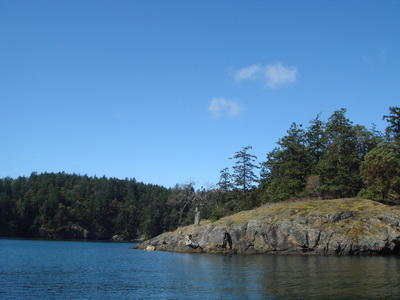
How did San Juan Island really look like 200 years ago?
Last Friday the S Pod had a case study discussion on sustainability. I chose an article entitled “Global Consequences of Land Use” by Foley et al, published in Science in November, 2005. The article pertains primarily to the effects of agricultural land use on land cover. One aspect I find intriguing is soil salinization, a phenomenon common in agricultural lands. Heavy irrigation of soil, coupled with removal of deep-rooted native vegetation, cause water table to rise near to soil surface. A disturbance such as heavy rainfall can then draw water levels to the root zone. When this water is evaporated from the soil surface, the salt is left behind, causing soil salinization, which quickly deteriorates soil quality.
Our Beam Reach instructor, Dr. Scott Veirs, mentioned that one common problem on San Juan Islands is the overwithdrawal of groundwater, causing salt water to seep into the aquifer. This led me to think more about the land and resource usage on San Juan Islands. In a conversation with Jason Gunter, owner of Discovery Sea Kayak, I found out that before English and American settlers arrived at San Juan Islands, the Native Americans practised controlled burning of open lands in order to better harvest bulbs. It has been speculated that at the time, many parts of San Juan Island were not forested. The theory is that controlled burning allowed slow-growing trees such as oak to mature. When controlled burning stopped, tall and faster-growing conifers such as Douglas fir out-competed the slower growing species by creating shades. These conifers propagated, which gradually brought about the landscape we see on San Juan Island today.
Jason has also mentioned that this change in land cover has caused the loss of a few species of birds. It would be very interesting to find out how land use and land cover have evolved for the past 200 years, and whether this has impacted the local nearshore or marine ecology in any way. Nonetheless, I think it is even more pertinent to study the current land and resource usage on San Juan Islands, in order to modify and adapt resource usage to ensure the continuous availability of these resources — such as potable water and fertile soil — in the future.
Read More
After a long week of work we were excited to finally get into town yesterday. We ate a quick lunch, and hopped into the rowboats for a short, and somewhat rambunctious boat ride into Friday Harbor. The Whale Museum was our first, and longest stop. For me the most fascinating part of the museum was the rich cultural connection between the Northwest Coast Native People and the orcas. This subject is of particular interest to me after working at Camp Nor’wester (http://norwester.org/) this past summer. Camp Nor’wester is lucky enough to be home to a native big house, and a Northwest coast Native education program, but until the Whale Museum I didn’t know the native stories of the orcas. After a fascinating hour and half at the museum we decided to mosey around town, and somehow stumbled upon the Sea Shepherd store. For those who don’t know Sea Shepard is an anti-whaling organization founded by Paul Watson. The show Whale Wars follows the organization’s campaigns down in the Southern Sea, where they fight the Japanese whaling fleet. Their methods of stopping the Japanese border on blurred line between eco-terrorism and radical activism, but they do seem to be effective. It just so happened that Peter Hammarstedt, captain of the Sea Shepherd Ship Bob Barker, was doing a meet and greet at the Sea Shepherd store! We got to meet him, and had a really interesting conversation about the role of science in environmental activism (apparently there not much room for it)! This discussion tied in extremely well to our readings and talks in class about sustainability science, and the role science plays in conservation work.
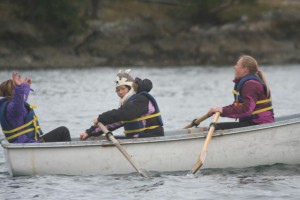
Last week the six of us each presented a case study on sustainability science, and discussed each paper in depth. I presented on a paper titled Rewilding and Biodiversity: Complementary Goals for Continental Conservation by Michael Soule and Reed Noss. This paper discusses the conservation method of rewilding, which aims at creating connectivity between isolated ecosystems. Rewilding is a fairly new technique used by conservation biologists to help preserve the key stone species, which typically are large carnivores, of isolated ecosystems. The concept of rewilding evolved from the theory of Island Biogeography, which was developed by Robert H. MacArthur and Edward O. Wilson in the late 1960s. Island Biogeography is he basic ecological concept that on any isolated environment (originally islands) the ecosystem has a maximum capacity of established species it can hold. The smaller the environment the less species it can sustain, and the higher the extinction rate. Because civilization has built up around many ecosystems, and essentially turned them into ecological “islands†the extinction rate has become much higher in these areas of isolation. Rewilding aims to reconnect these “islands†through wilderness corridors. These wilderness corridors are essentially highways of untouched land through which animals, namely large carnivores, can travel between.
Overall it has been an amazing first week, and I can’t wait to see what the future holds (hopefully whales!). I feel so fortunate to be in such a beautiful place, learning amazing things, with an incredible group of people!
Until next time,
Jamey
Read More
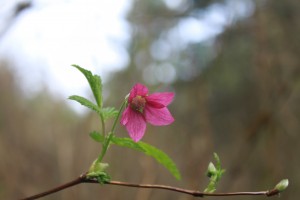
Natural Beauty
After a weekend filled of adventure and excitement I spent most of my Sunday relaxing, reading one of my new books that I found at the great used bookstore in Friday Harbor. Fittingly titled “Serendipity” this quaint little shop stole my heart with its book-filled walls, floors, and ceilings of every imaginable book genre. Despite the draw from the variety of sections, I somehow found myself hunkered down on a stool in front of a shelf full of books on my favorite subject…whales. Before discovering this gem of a shop, my Saturday morning started off with a misty row across the harbor into town. As a group, we wanted to spend our first Saturday adventuring around town together. This of course included visiting the one place we had wanted to go to all week, the Whale Museum.
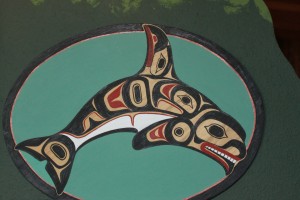
Native Killer Whale Carving
Finding myself wandering around the museum surrounded by hand painted whales swimming across the oceanic walls with the sounds of orca calls filling the air, it finally began to sank in. This experience that I have been dreaming about for years, is finally becoming a reality. I felt like a little kid again, bubbling with uncontainable excitement. That day spent exploring the town, as a group was great. We have already begun to make so many memories here on this enchanted island. The day granted me one more surprise when we ran into an old acquaintance of mine at the movie theatre, Captain Jim Maya. Captain Jim runs one of the local whale watch boats here on San Juan Island. He took my mom and I out whale watching about three years ago. It was the first time I that I saw orcas in the wild, and I will never forget it. I very much attribute my participation in the Beam Reach program to that affirming experience. The phrase “it’s a small world†doesn’t justify our run in with Captain Jim. The sense of community on San Juan Island is incredibly strong. I have a feeling that we will only find ourselves getting more attached to the kind and interesting people that make the atmosphere of Friday Harbor irresistible. Every day I can sense that we are building ourselves a new type of community as a class, and meshing it with the existing one of Friday Harbor.
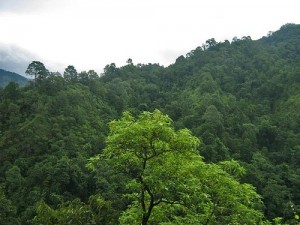
Nepalese Forest Ecosystem
My favorite aspect of the Beam Reach Program is the continuance of my education; we never stop learning, even our break times are filled with academic discussions and inquiries. The other beautiful part of this program is the power the individual student is given to create our own education. Although the resident orca whales intrigue all of us, we also have unique interests outside of the Beam Reach course. Providing us with an opportunity to share those interests with the class, our assignments often ask us to choose journal articles for group discussion. The common thread among all of the articles being that they involve or discuss the practice of sustainable science. When thinking about a case study that I was personally interested in learning about, I instantly thought of Nepal and my hopes to travel there next spring to study community forestry and sustainability. Fittingly, the paper that I chose to discuss with the class is “Capital Formation and Community Forestry in Nepal”. Community forestry in Nepal has become a vital thread of sustainability and environmental conservation. This paper examined the role that capital formation plays in the community forestry process. Specifically, it looked into what characteristics determine the success of a Forest User Group, the title of the community forestry groups, what the generated capital is used for, and the affect this has on the community’s views of the forestry system. What the study found was that the management of their sales, and the type of forest they were managing determined the success of a Forest User Group. In almost all examined cases, the generated capital was primarily used to benefit the community in education.

Coastal Community
Overall, a positive change in attitude towards the system of community forestry was also demonstrated. I feel the paper really demonstrates that giving power and responsibility of the local environment to the community that it affects results in  benefits for the community, as well as improved conservation of the environment. I feel that community management methods are incredibly sustainable, and although the transition period may be difficult if they are given the proper skills, the outcome will outweigh any costs. Reading about the success of community resource management in Nepal got me thinking about community resource management in the San Juan Islands. This community cares a great deal about the local environment and the ecosystems that keep it pristine. I can’t help but wonder what the state of the herring, salmon, orca, and other marine animals would be if community resource management were implemented. Would they be in a better or worse state than they are today? It is hard to say, but I hope to think about this more as the weeks progress. The week ahead promises more mind expansion with multiple guest scientists visiting and lots of afternoons spent out at Lime Kiln Lighthouse.
Read More









 Twitter
Twitter LinkedIn
LinkedIn Facebook
Facebook